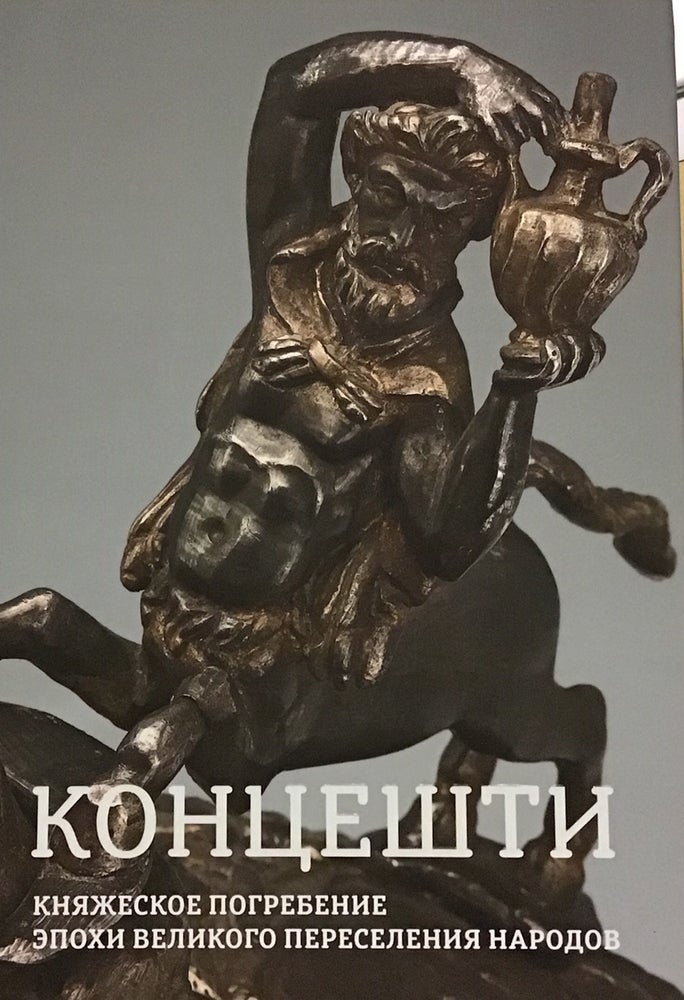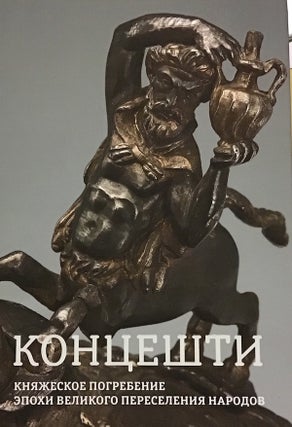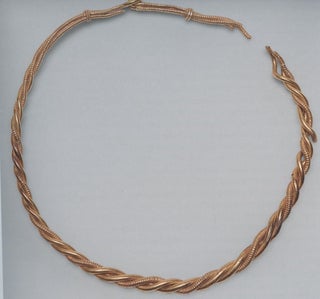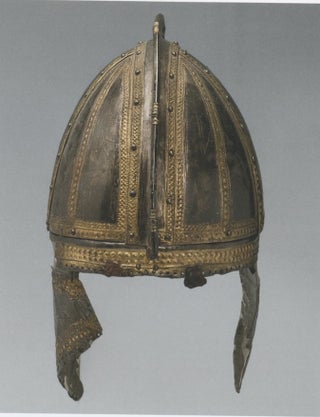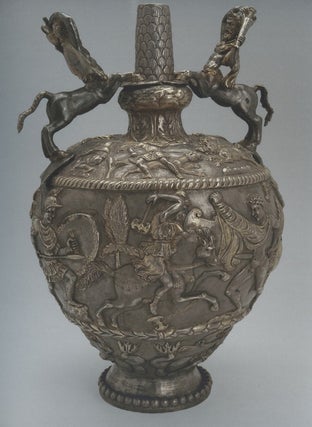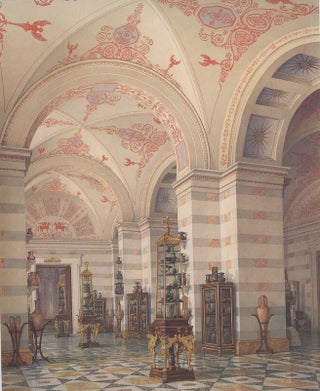Kontseshti: kniazheskoe pogrebenie epokhi velikogo pereseleniia narodov / Concesti: a princely grave from the great migration period
St. Petersburg: Herm, 2019. Sewn cl. This Hermitage monograph publishes and describes in detail for the first time the complete finds of a grave mound on the Prut River in modern Romania dating to the fourth century. Researchers infer from inscriptions on the works that they belonged to a leader of a Germanic tribe from the region north of the Black Sea who was in Roman service and fought the Huns and the Persians circa a.d. 360 to 380. Recent study by Hermitage archeologists on site together with technological analysis by art historians and conservators in the Hermitage (e.g., x-ray fluorescence) has made a complete scholarly publication possible. Among the works recovered are equestrian gear, a warrior’s helmet, a diadem, and masterpieces of metalwork depicting military conflict and mythological scenes. Works and artifacts are of late Roman, early Byzantine, Hun and East Germanic/North Pontic origin were a sensation since first exhibited at the Hermitage in the nineteenth century. The provenance is also dramatic: Concesti in modern Romania is located in a part of Ottoman Empire occupied by Russia after war with Turkey of 1806–12 approximately the time the hoard was discovered: hence the works ended up in the Russian imperial capital. 243 p., approx. 100 color and b/w illus., Rus. with title page, table of contents, and 6-page summary in ENGLISH. Item #3486
ISBN: 9785935728489
Though the finds were long acknowledged as significant for art and archeological history of the period of great migrations, this is the first time the entire complex of works is published in one book, which should be instrumental in more precise dating of the works and in clarifying their origins seen as various (late Roman to nomadic and Germanic). An appendix presents in tabular form results of technical analysis of the works, including their chemical composition. Chapter titles: History of discovery of the burial mound; Scholarly overview of the materials;.
Price: $85.00

